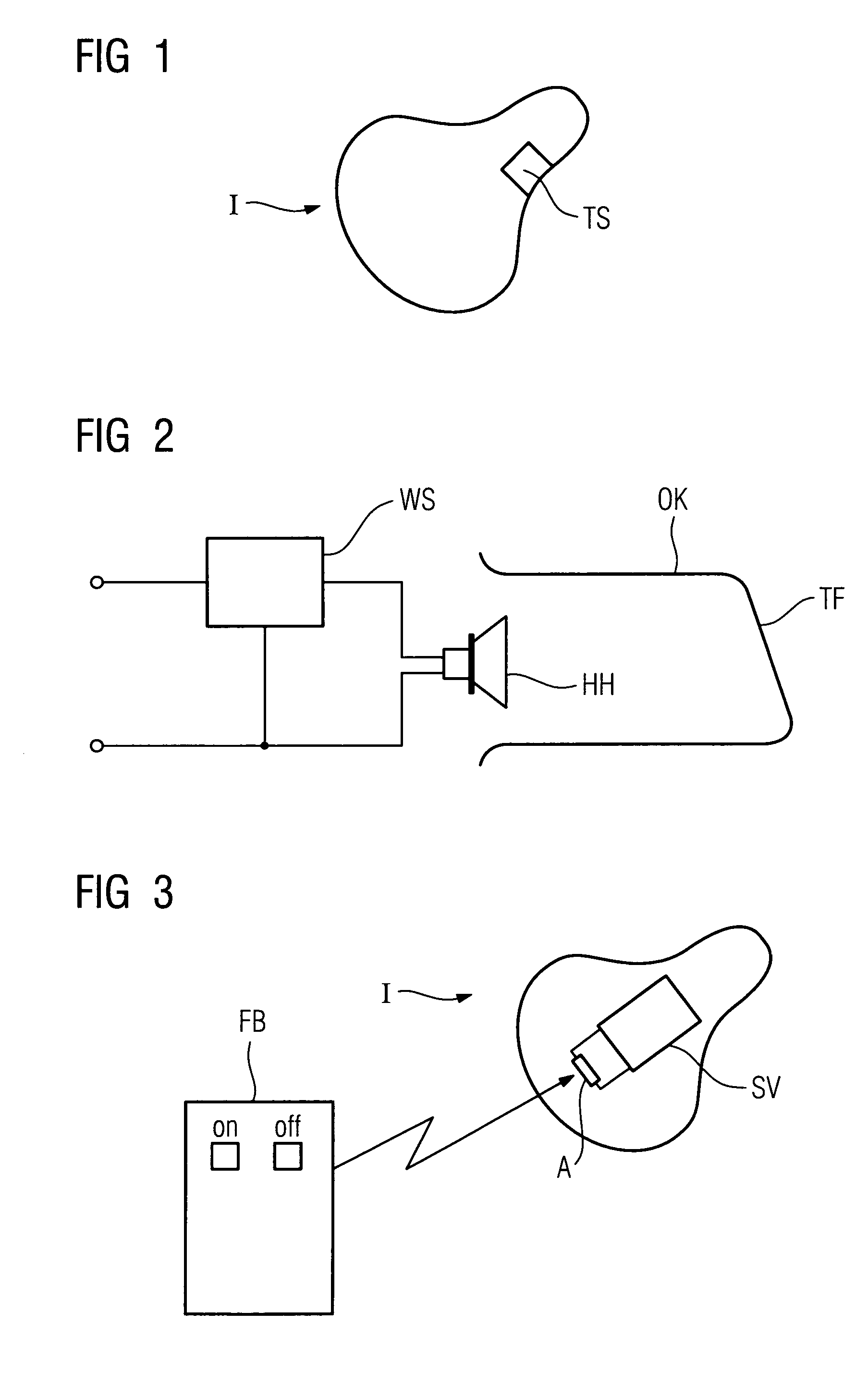Hearing aid with a switching device for switching on and off and corresponding method
a switching device and hearing aid technology, applied in the field of hearing aids, can solve the problems of relatively high cost of said sensors, achieve the effects of improving user-friendliness, improving switching response, and difficult operation
- Summary
- Abstract
- Description
- Claims
- Application Information
AI Technical Summary
Benefits of technology
Problems solved by technology
Method used
Image
Examples
Embodiment Construction
[0025]FIG. 1 shows a schematic diagram of an in-the-ear hearing aid I. It has a temperature sensor TS. When worm, the hearing aid I or its shell heats up. The temperature sensor TS registers this heat. Once a certain temperature threshold is exceeded, the device is switched on. If the temperature drops back to below a lower temperature threshold, the hearing aid I switches off again. This temperature-controlled switching on and off is also possible in principle with a single temperature threshold.
[0026]Alternatively the sensor TS shown in FIG. 1 could also be configured as a pressure sensor. This pressure sensor, in the hearing aid housing in in-the-ear hearing aids or in the molded earpiece in other types of hearing aid, identifies whether the device is in the ear and switches it on or off accordingly. The pressure sensor thereby responds to the pressure of the wall of the hearing aid housing or molded earpiece on the auditory canal. The pressure sensor can be in the form of a piez...
PUM
 Login to View More
Login to View More Abstract
Description
Claims
Application Information
 Login to View More
Login to View More - R&D
- Intellectual Property
- Life Sciences
- Materials
- Tech Scout
- Unparalleled Data Quality
- Higher Quality Content
- 60% Fewer Hallucinations
Browse by: Latest US Patents, China's latest patents, Technical Efficacy Thesaurus, Application Domain, Technology Topic, Popular Technical Reports.
© 2025 PatSnap. All rights reserved.Legal|Privacy policy|Modern Slavery Act Transparency Statement|Sitemap|About US| Contact US: help@patsnap.com


